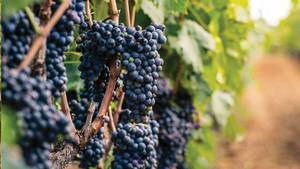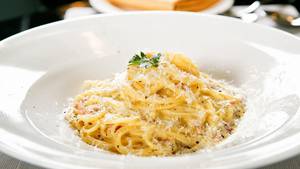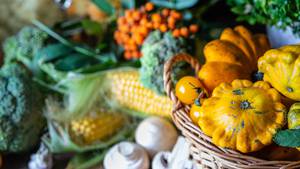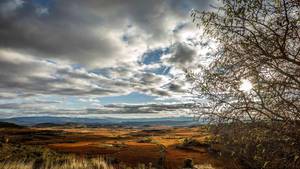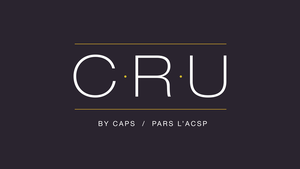THE CEPAGE & THE ENCEPAGEMENT
THE CEPAGE - Cepage literally translates to the “grape”.
THE ENCEPAGEMENT – Where cepage refers to the individual grape, encepagement refers to the % of each grape used to make the final blend. In Bordeaux it is traditional for the best chateaux to pick and vinify the individual cepages separately. This is an important quality factor that separates the better wines from the generic Bordeaux wines as those with less fortune behind their names are not always afforded this opportunity.
MATCHING GRAPE TO PLACE – STRATEGIES FOR A MARGINAL CLIMATE
The Burgundians, over the centuries, found two particular varieties that flourished in their varying terroirs and their wines are in this sense “Varietal Wines’.
When we talk of
In 2019 the idea of ecological fit took on new meaning in Bordeaux. In a response to changes in climate, authorities edited the varietal list to include 7 new grape varieties in the region for use in Bordeaux AOC and Bordeaux Superieur AOC wines.
The new blue/red grapes: Touriga Nacional, Marselan (Grenache and Cab Sauvignon cross), Arinarnoa (Cabernet and Tannat cross) , Castets (a rare variety that produces darkly pigmented wine)
The green/white grapes: Petit Manseng, Albarino and Liliorila (Chardonnay and Baroque cross0
The Bordelais rely on different grapes (cepages) because:
Ecology determines that different grapes do better due to:
i. Variations in soil
ii. Variations of climatic conditions from place to place
iii. Different growing characteristics (life cylces) of each variety (susceptibility to certain varieties to spring frosts, odium, rot, requirement of certain length of growing season)
iv. A reduced risk of ‘total crop loss’ to unpredictable weather by having a number of different varieties planted (kind of like a diversified portfolio of investment)
v. Influence of soil type – certain varietals do better grown on specific soil types.
The potential to produce a more complex wine based on
- Individual characteristics each cepage lends to the final blend including:
- Colour
- Tannin
- Acidity
THE VARIETALS & THEIR CHARACTERISTICS
THE BLUE GRAPES
Nearly 99% of Bordeaux red is made from just 3 grapes:
Merlot 62%
Cabernet Sauvignon 25%
Cabernet Franc 12%
The others:
Malbec 0.8%
Petit Verdot 0.5%
Carmenere 0.025%
*source: CVIB
Cabernet Sauvignon - Full and Tannic with characteristic cassis fruit, mint, & cedar notes with age. Slow to mature. Gives body and structure and intensity of color to the blend. Also contributes to longevity of wines.
The vine buds later than the other varieties, therefore it is less susceptible to spring frosts. It also flowers later so early spring rains that may reduce the earlier Merlot crop may not affect the C.S. crop. Cabernet Sauvignon is the last to ripen so it is less favourable in the cooler areas away from the warming water and/or at higher elevations.
The Cabernet Sauvignon vine does best in drier, well-drained soils. Cabernet Sauvignon prefers the outcroppings of deep Gravel (typical of the Medoc) that allow water to flow straight through, keeping the soil relatively dry. Gravel also has the added benefit of storing daytime heat and radiating it at night to aid in ripening the fruit.
Merlot
Adds plump, succulent fruit, round fullness and alcohol (typically reaches higher sugar levels than C.S.)
Softer in acid and lower in tannin – helping to round out and complement the tougher Cab. S. in youth.
The vine buds earlier than C.S. so it is more susceptible to spring frosts. Flowering is also earlier than C.S. and early spring rains can be problematic resulting in poor fruit set (coulure). Merlot also ripens earlier so it is the preferred grape where falls are cooler and the growing season ends sooner.
Merlot thrives on Clay soils which are damper, cooler and heavier than gravel. Merlot is the predominant cepage of the Right Bank and on the non-gravel parts of the Medoc.
Cabernet Franc
This variety is considerably lighter in body and structure (softer tannins) than its Cabernet cousin (C.S.). It adds perfume and earthy seasoning to the blend. Because of its earlier ripening and preference for limestone soils, Cabernet Franc is preferred over C.S. in much of St. Emilion and Pomerol where Cabernet Sauvignon has trouble ripening in the cooler autumns (shorter season).
Malbec (Auxerrois, Pressac, St. Emilion)
Adds juicy rich flavour and dark colour when used but Malbec underwent a major decline (post phylloxera) and is only now beginning to regain some foothold in Bordeaux in general, although in Bourg and Blaye it maintained a presence and in fact many producers have fairly high percentages of Malbec in the blend in these areas. Why? Partially ecological, as recent warm summers have allowed vignerons to produce grapes such as Malbec and Petit Verdot more consistently and partially for economics and marketing as the smaller appellations struggle for identity, relying on non-traditional rather than the big three (CS, CF, Merlot) allows them to differentiate themselves from the pack.
Traditionally Malbec’s greatest virtue was its ability to give fruiting buds from old wood (a real plus in years when other varieties are hit by harsh winters or spring frosts). With technological advances this advantage was less important.
Petite Verdot
PV is an excellent variety in its own right. P. Verdot can add more perfume (banana, pencil shavings, violet), colour and tannin to the blend, but because of its late ripening (it’s the last to ripen of the Bordeaux varietals) and reputation for being a finicky grower its use in Bordeaux became particularly rare. However, with Bordeaux consistently experience warmer vintages the use of Petit Verdot has increased (10% increase per annum). Notably Chateau Palmer uses as much as 10% Petit Verdot in the blend. Normal amounts are >3% and often none.
Carmenere (Gran Vidure)
Carmenere’s susceptibility to odium and coulure made it undesirable for vignerons to replant the grape after its almost complete annihilation from Bordeaux’s vineyards when that region was devastated by the effects of Phyloxxera. The least used of the six blue grapes allowed in the blend. Carmenere’s fortune is in currently in Chile. While some plantings exist of Carmenere it remains largely insignificant . Carmene is part of the Cabernet family. Unripe it can have distinctive vegetal notes. Fully ripe versions can have intriguing mocha and coffee characteristics.
The new blue/red grapes: Touriga Nacional, Marselan (Grenache and Cab Sauvignon cross), Arinarnoa (Cabernet and Tannat cross), Castets (a rare variety that produces darkly pigmented wine)
THE GREEN GRAPES
It’s a similar story for white white as red wine, as Bordeaux’ vineyards are dominated by just 3 grapes totally 97% of production.
Semillon 54%
Sauvignon Blanc 36%
Muscadelle 7%
The remaining 3%:
Sauvignon Gris
Colombard
Folle Blanche
Ugni Blanc
Chardonnay – just a few hectares
Sauvignon Blanc
Sauvignon Blanc doesn’t reach the heights here as a ‘varietal wine’ that it does in the Loire, Chile, N-E Italy & New Zealand. Instead, Sauvignon Blanc is a very important part of the BLEND of white Bordeaux. Sauvignon Blanc from Bordeaux tends to be less pungent and zippy than regions where it shines as a varietal. In Bordeaux Sauvignon Blanc tends towards a lighter, crisper style with some refreshing acidity, the perfect balancing partner for the other primary white grape – Semillon. Its acidity and freshness also plays an important role in Bordeaux’s other great wines, the famous desserts wines of Sauternes, Barsac and the satellite appellations of Loupiac, St. Croix du Monts, Cadillac and Monbazillac.
Semillon
Produces a rich, viscous and somewhat ‘waxy’ textured wine of relatively high alcohol and low acidity. It’s intensity of flavour benefits greatly from being blended with Sauvignon Blanc’s natural acidity. Semillon’s fruit intensity, thin skin and susceptibility to Botrytis makes it of particular importance in the sweet wine areas like Barsac and Sauternes. Semillon natural ability to take on honeyed fruit characteristics with age lends itself well to dessert wine styles. Semillon also benefits from oak aging as oak aging can lend some structure to what would otherwise be a flabby wine.
Muscadelle
Adds aromatic spiciness and grapey richness. Used in moderation, it adds another dimension to Bordeaux whites, both dry and sweet. It plays an important role in the wines of Sauternes, Barsac and is often used in higher percentages in the lesser known Bordeaux dry white appellations where it can give a welcome aromatic lift to some wines that might otherwise be relatively neutral character.
Colombard & Ugni Blanc
Also grown but very limited – mostly used in cheap Regional whites or in distillation for brandy.
Also allowed but rarely used are Merlot Blanc and Mauzac (plays a more dominant role in the wines of Limoux.)
The green/white grapes: Petit Manseng, Albarino and Liliorila (Chardonnay and Baroque cross)


